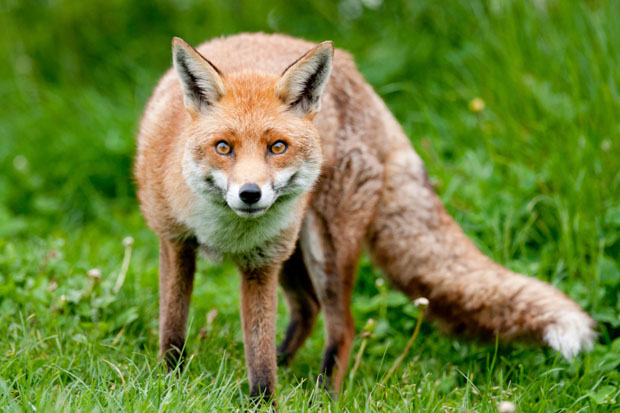If you don’t hunt or listen to The Archers, you might be forgiven for assuming that hunt saboteurs had become obsolete. Hunting with hounds was banned ten years ago, and the law is respected: convictions for illegal hunting against registered hunts are rare. But as this year’s season draws to a close, masked saboteurs are still a regular sight. Some made headlines in January when a video emerged of a group, faces covered, beating a hunt master unconscious with iron bars.
What few people seemed to ask was: why? Why on earth do the protest groups still exist when the ban they demanded came in so long ago? And when you consider the effects of the ban on the animals that tend to be devoured by foxes, indeed on animals in general, why won’t they countenance the argument that hunting — and keeping the fox population down — was actually good for all animals?
Jim Barrington, an animal welfare consultant for the Countryside Alliance, shows it is possible for hunt sabs to see the light. Jim first got involved with the League Against Cruel Sports in the 1970s, after seeing pictures of horribly mangled dead foxes. Jim loved sabbing hunts. At first, he says. it was ‘like stepping into a Dickensian world… The smell of the horses and things — and doing something for animal welfare; it was just a lovely thing to get involved in.’
Barrington stayed with the League until 1995 and eventually became its director; but by then he was becoming disheartened with his group’s attitude to hunting. A hunting ban was their absolute aim, and any examination of whether it was in fact good for animals was shouted down. He had joined to improve animal welfare, but it became clear to him that the ban and animal welfare were two different things. That’s something that the League continues to ignore today.
Unlike the iron-bar-wielding bullies of the post-ban movement, Barrington has grown to see hunting from a wildlife management perspective. He sees the benefits that hunting confers on the fox’s prey, as well as its benefit to foxes. Within months of the hunting ban (which included hare coursing) coming into force, for example, ‘ten of thousands of hares were shot out’ on coursing estates, since the incentive for keeping them had been removed.
But Barrington’s that rare thing, a former sab who genuinely cares about animals enough to think through the ramifications. The problem is, why would we expect hyped-up antis to stop and think when the general population has become almost as radicalised as they are? Increasing numbers of people, when asked, say they’re opposed to the idea of killing animals for any reason — even for the benefit of other species. A recent survey found that just 15 per cent of British people living in urban areas understand the need to cull deer, while 14 per cent see no reason to kill any animal at all, including rats and mice.
People seem to find it hard to remember that rats spread disease, or even what meat is. When the young daughter of Susannah Constantine (of Trinny and Susannah fame) was photographed holding a dead duck, commentators were — as the Daily Mail put it — ‘outraged’, and both Constantine and food writer Rose Prince were provoked into defending the photographs, arguing that at least the girl understood where her food came from.
Ironically, given the ban, foxes are one species which people do seem to understand need controlling. In the same survey, 33 per cent of those questioned supported killing a certain number of foxes in the name of pest control — perhaps because even sentimental Londoners see foxes trotting along the road and picnicking in the bins daily.
Those figures probably won’t do much to cull anti-hunt protestors: they’re far too dedicated, and sabbing has become a way of life. As the former deputy prime minister John Prescott said last year: ‘I was proud to vote for the Hunting Act in 2004 to prevent the brutal killing of foxes to satisfy the blood lust of a few brainless toffs.’ There’s no excuse for a 21st-century saboteur, but their continuing presence does serve one purpose. They show that this was never really about the foxes; it was always about fighting a class war under the guise of animal welfare.







Comments